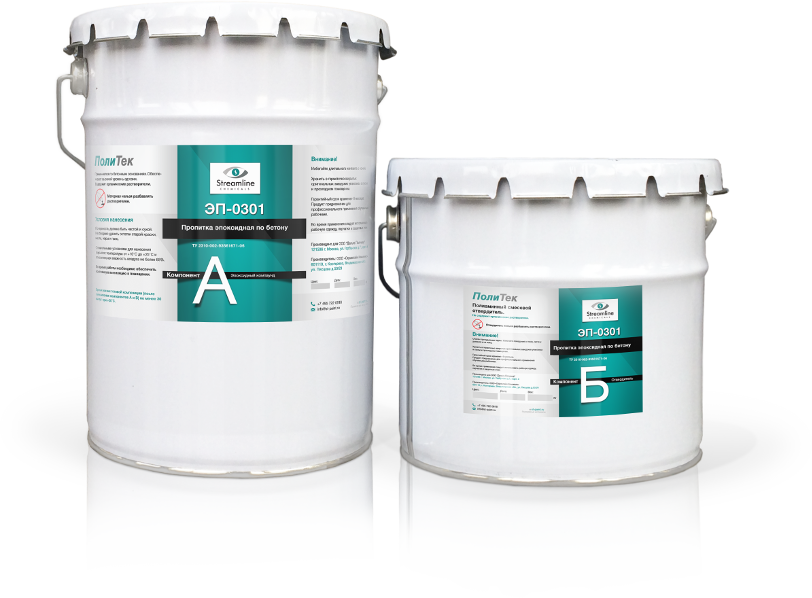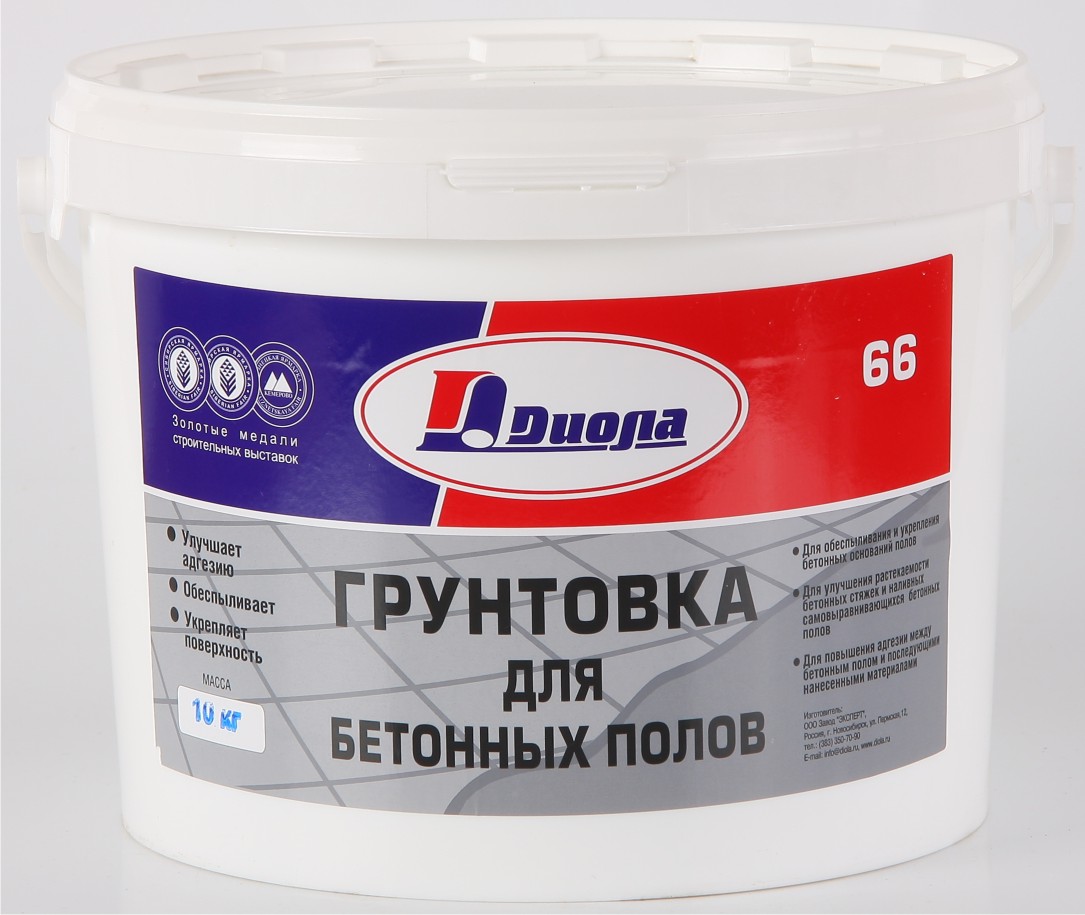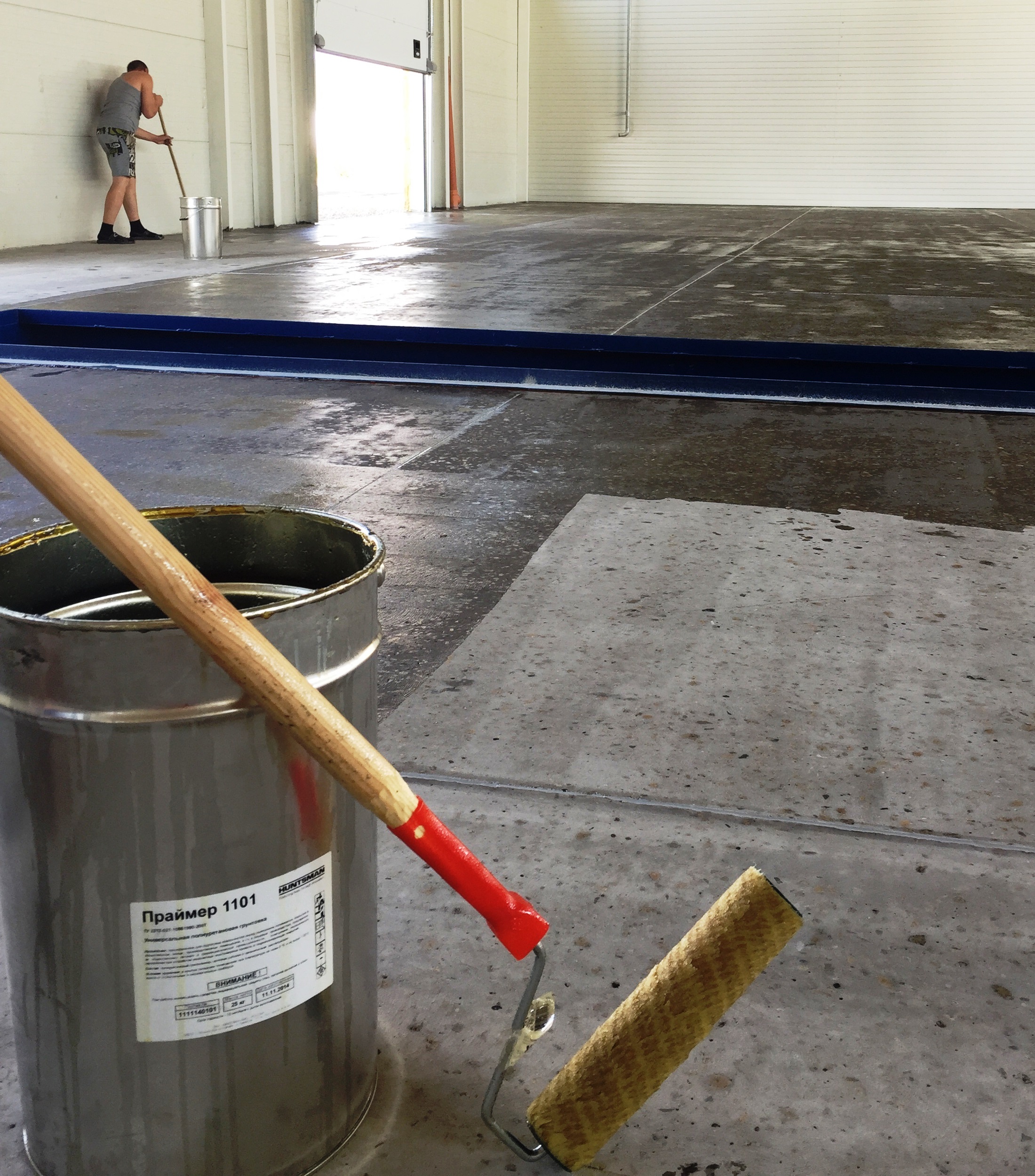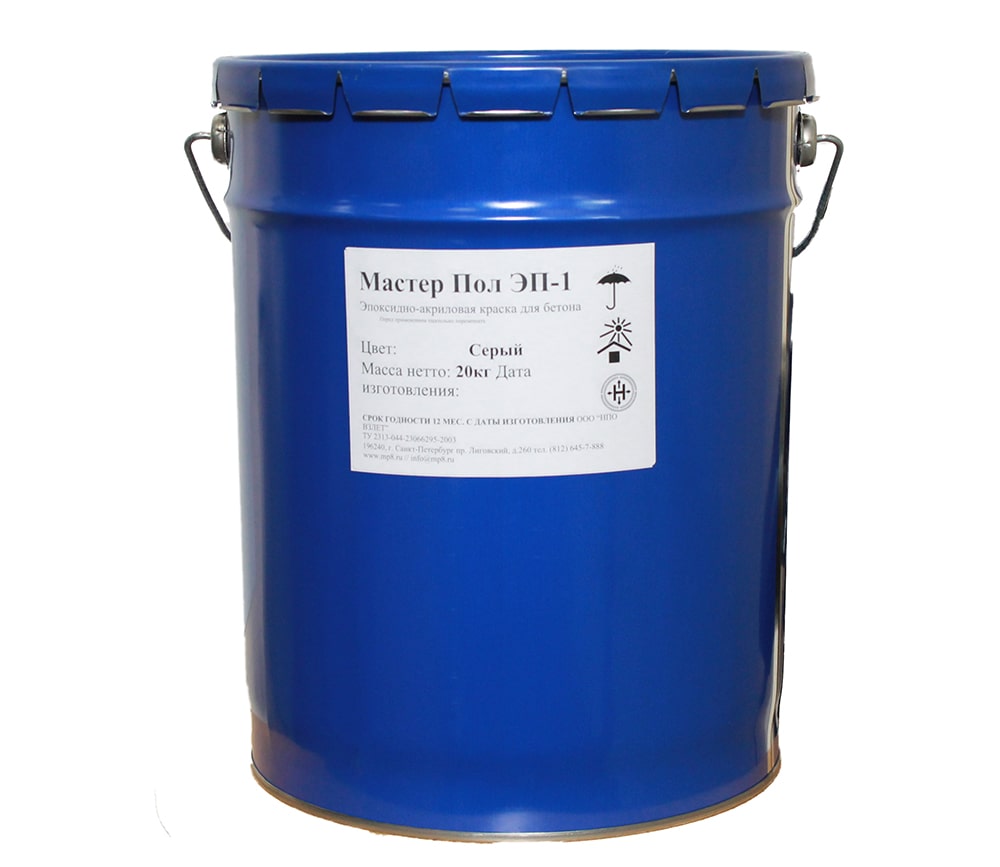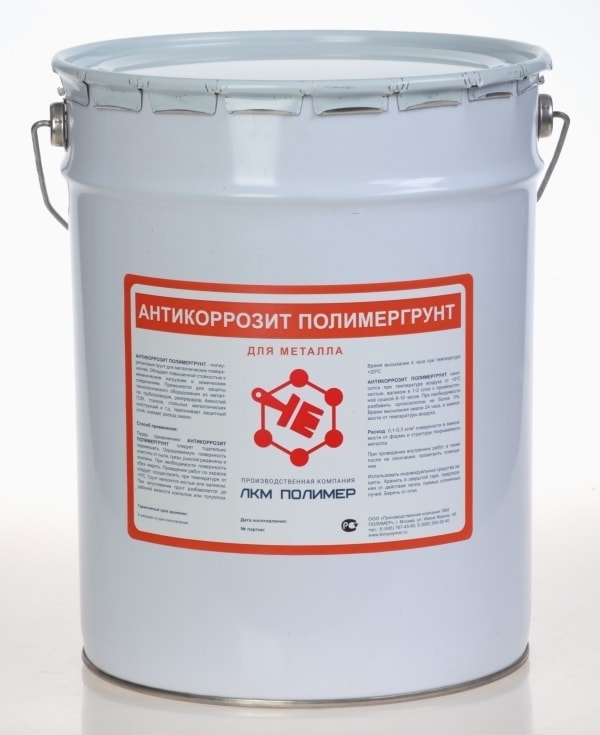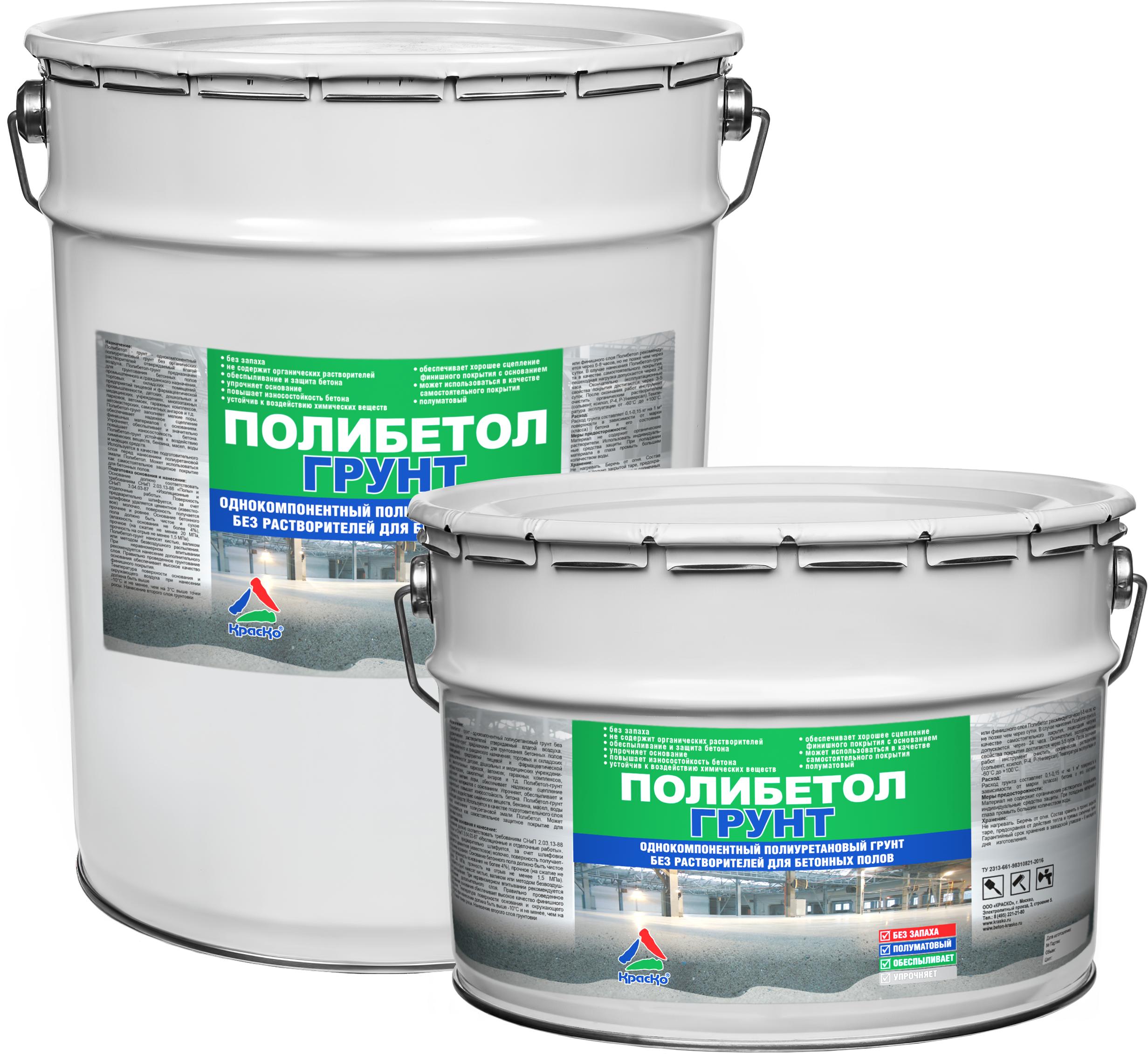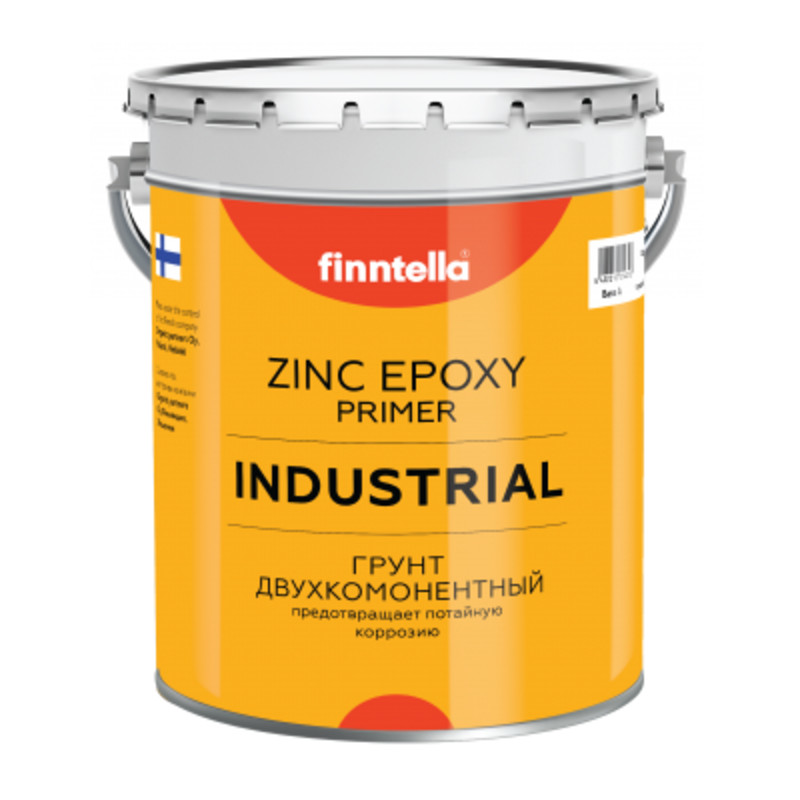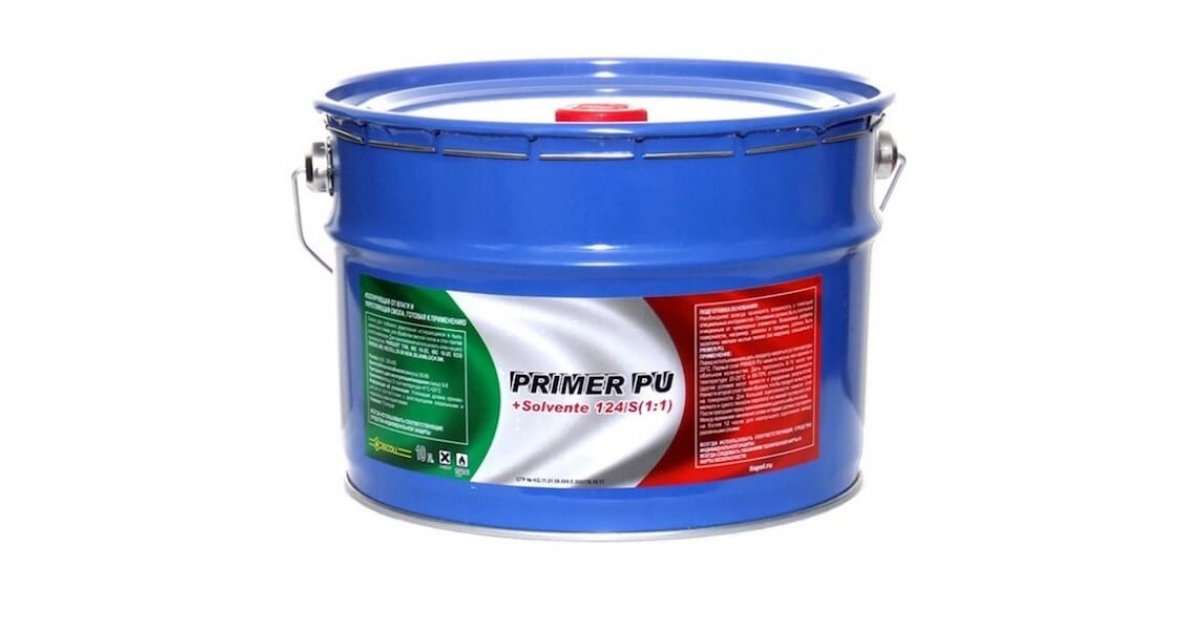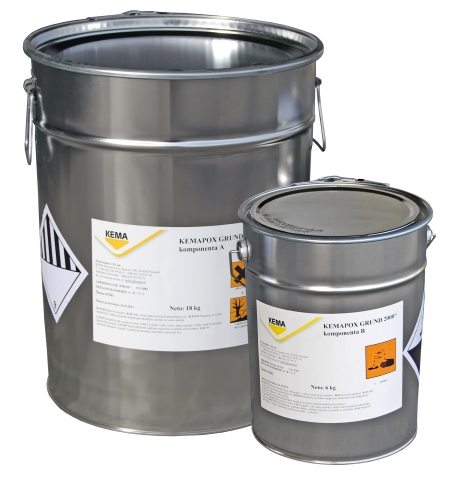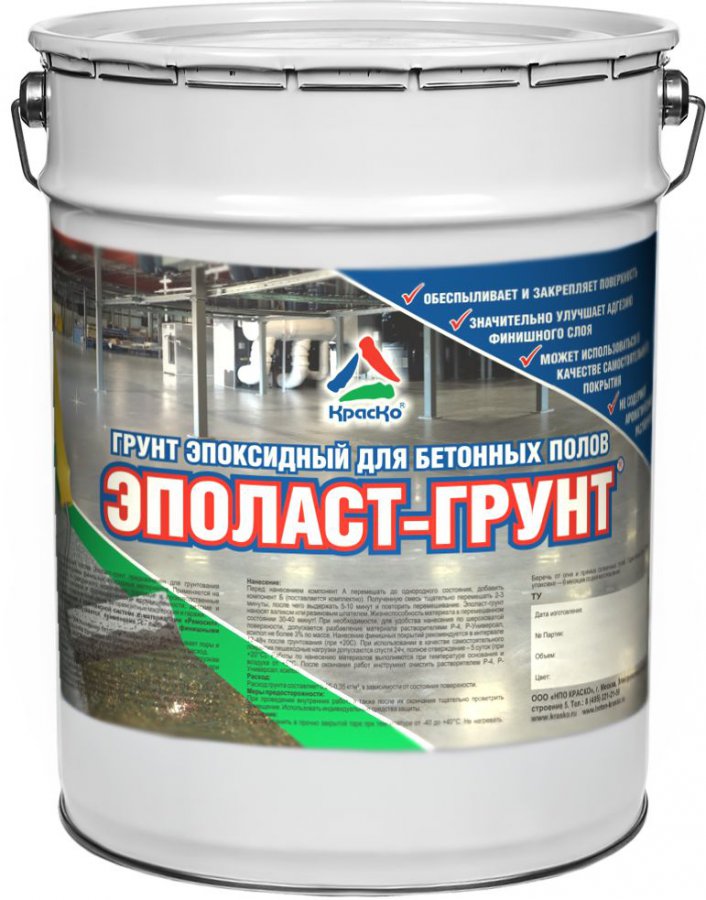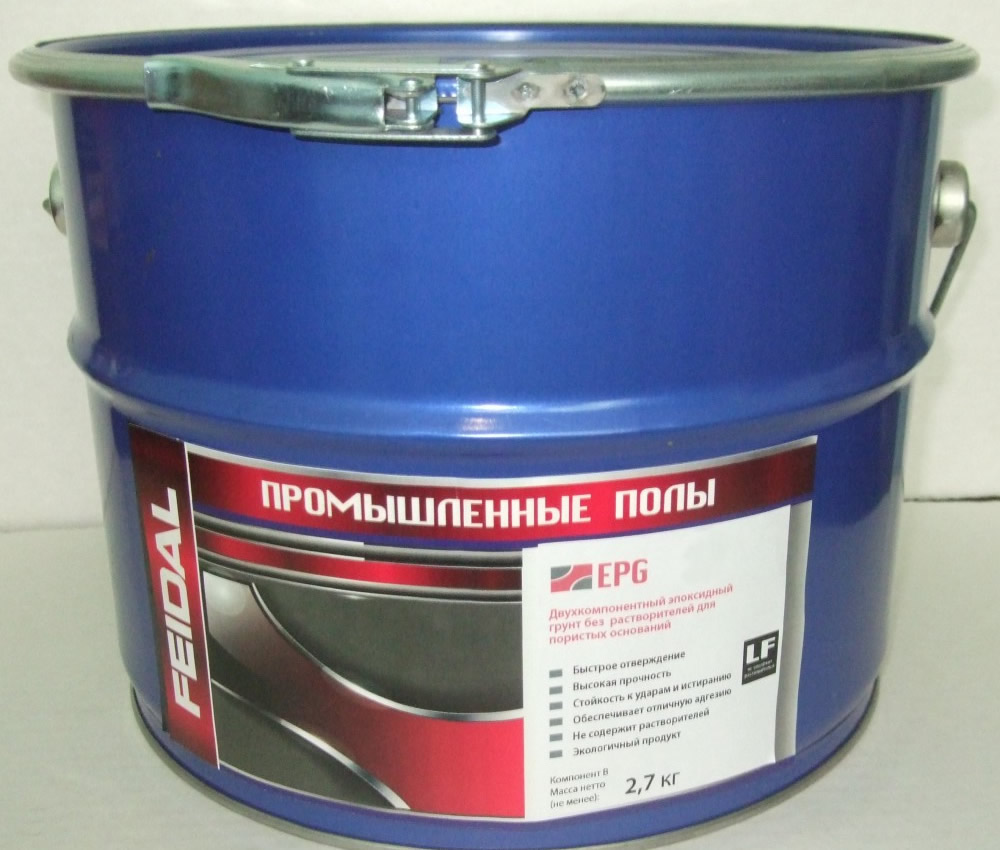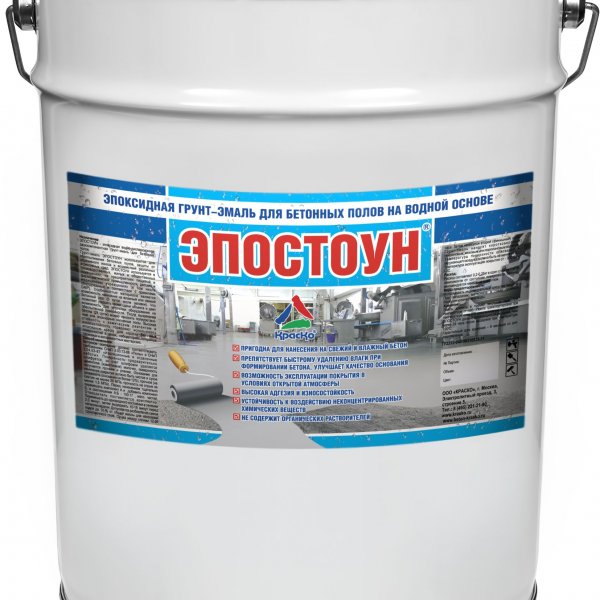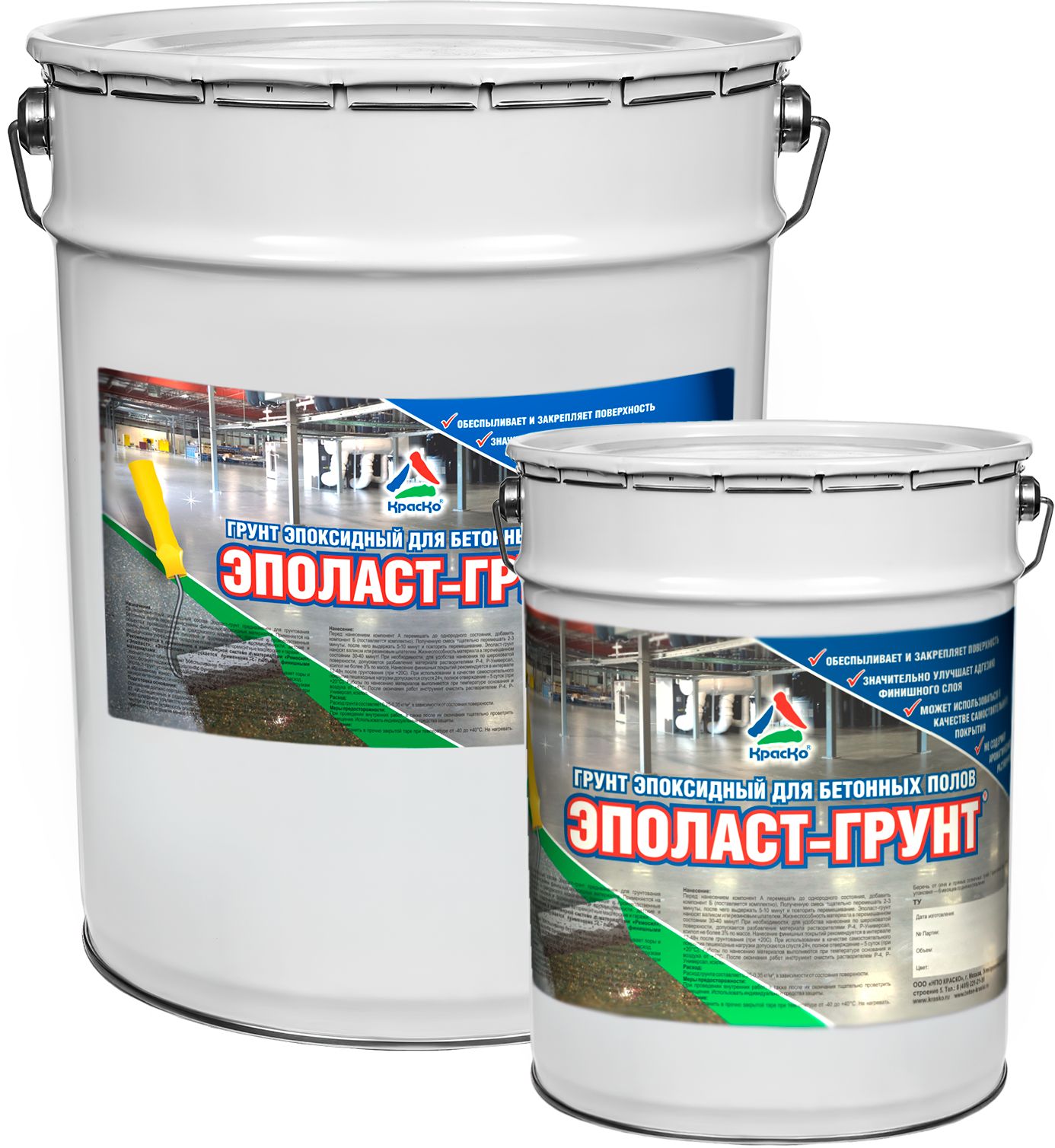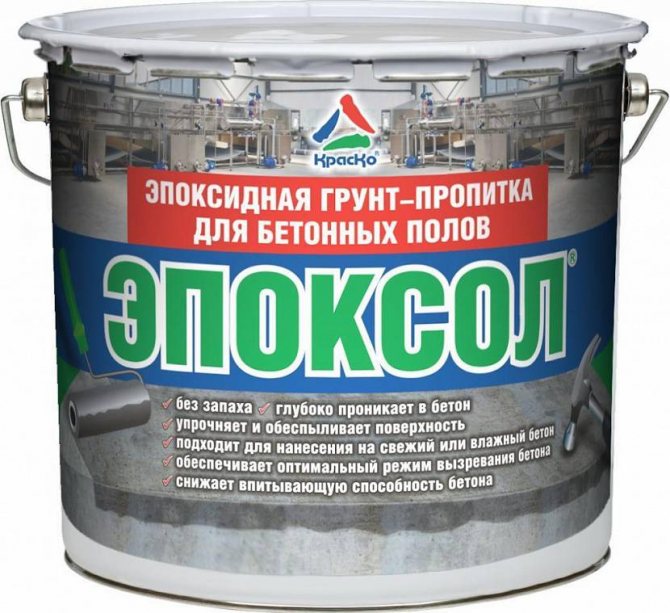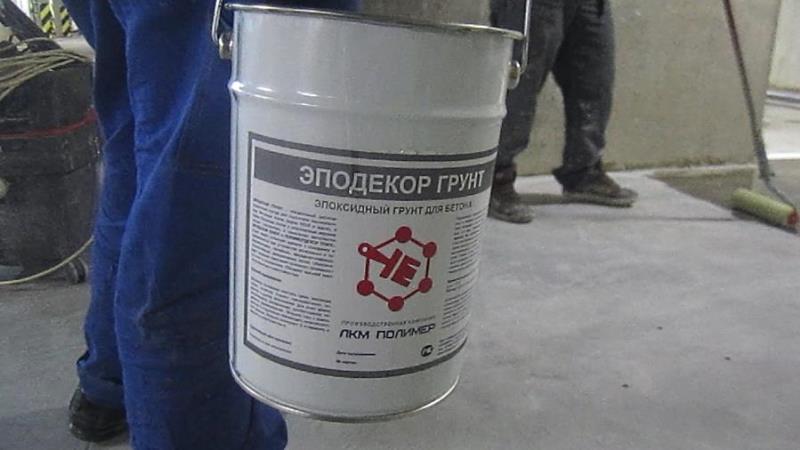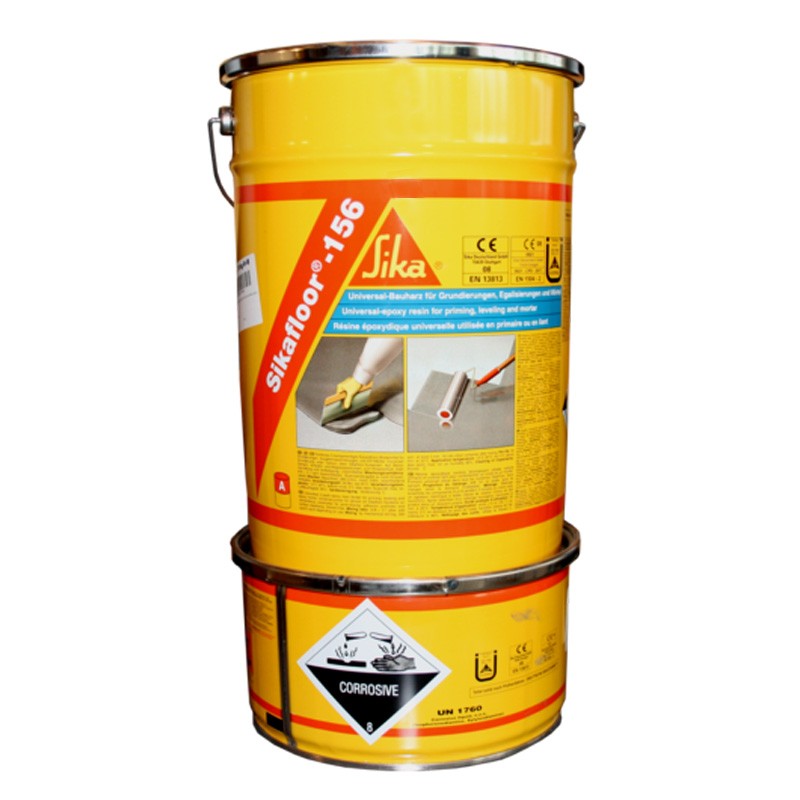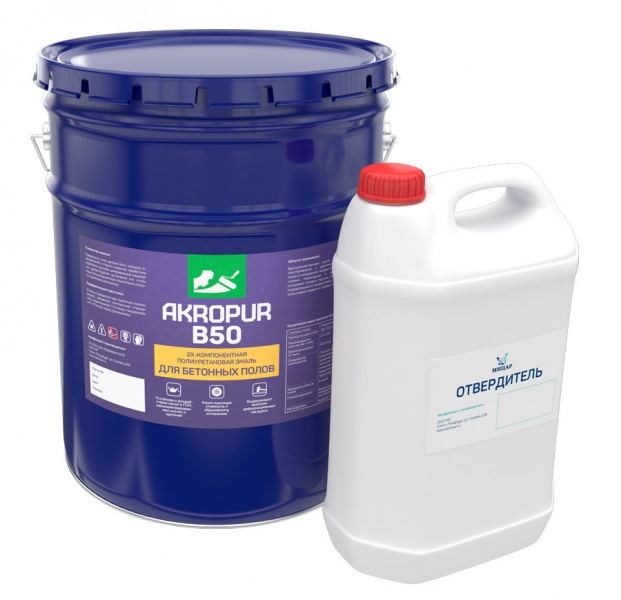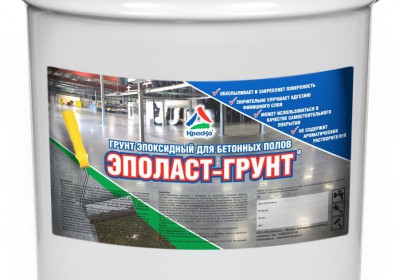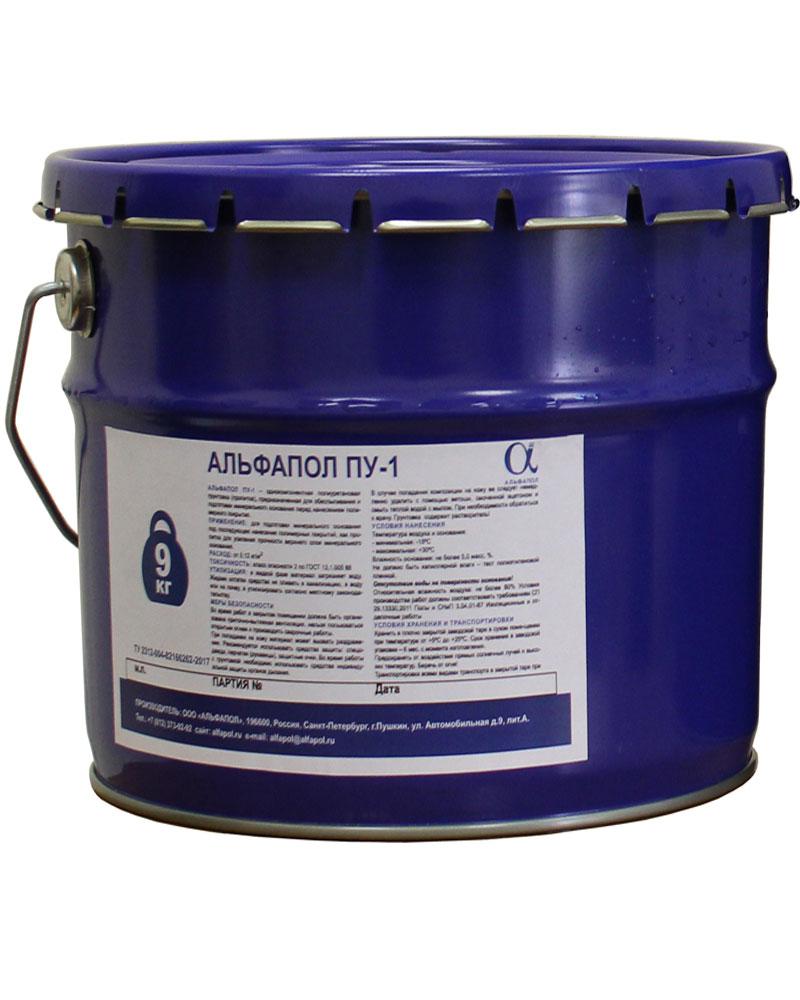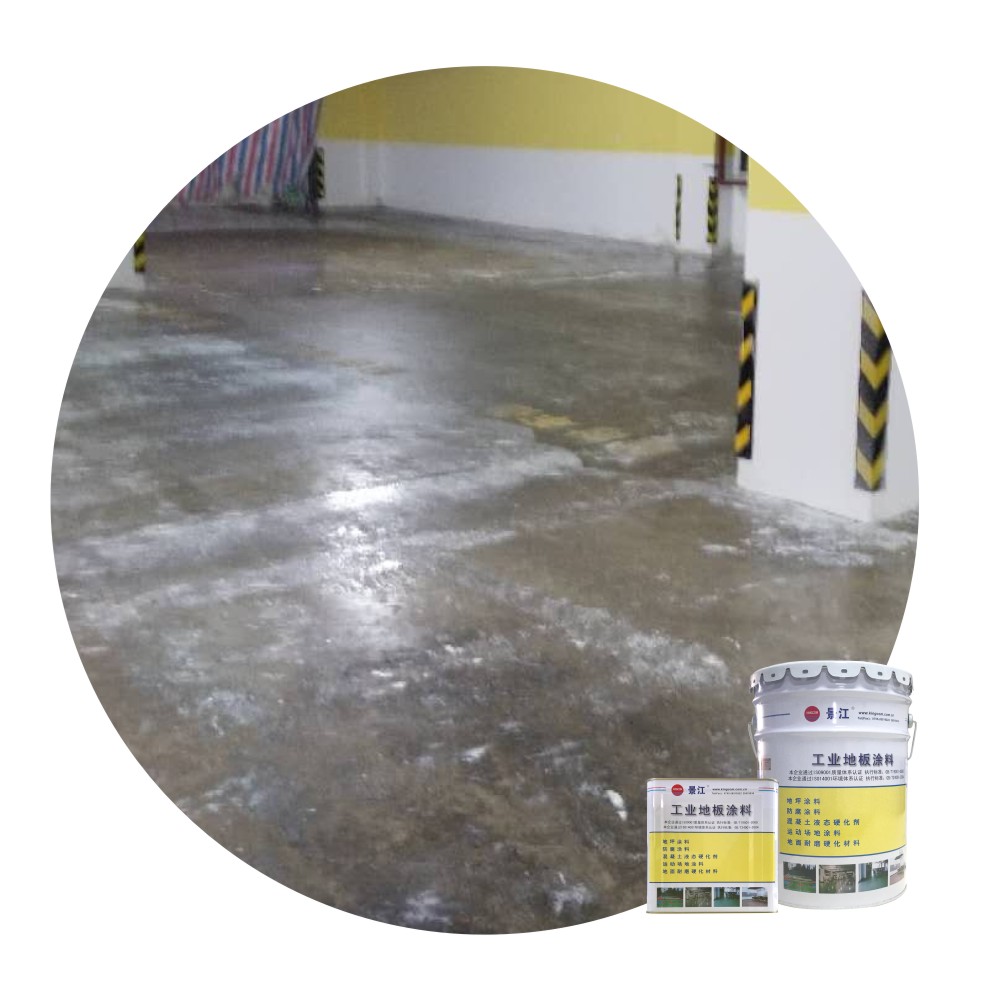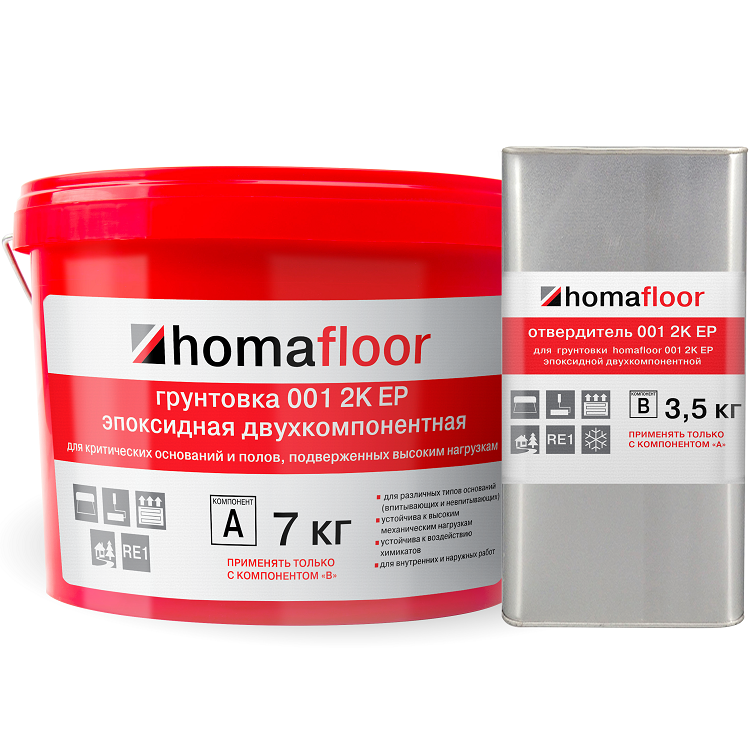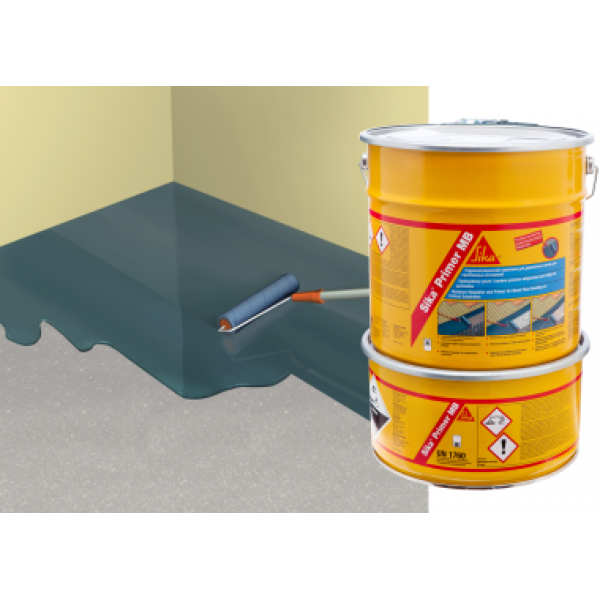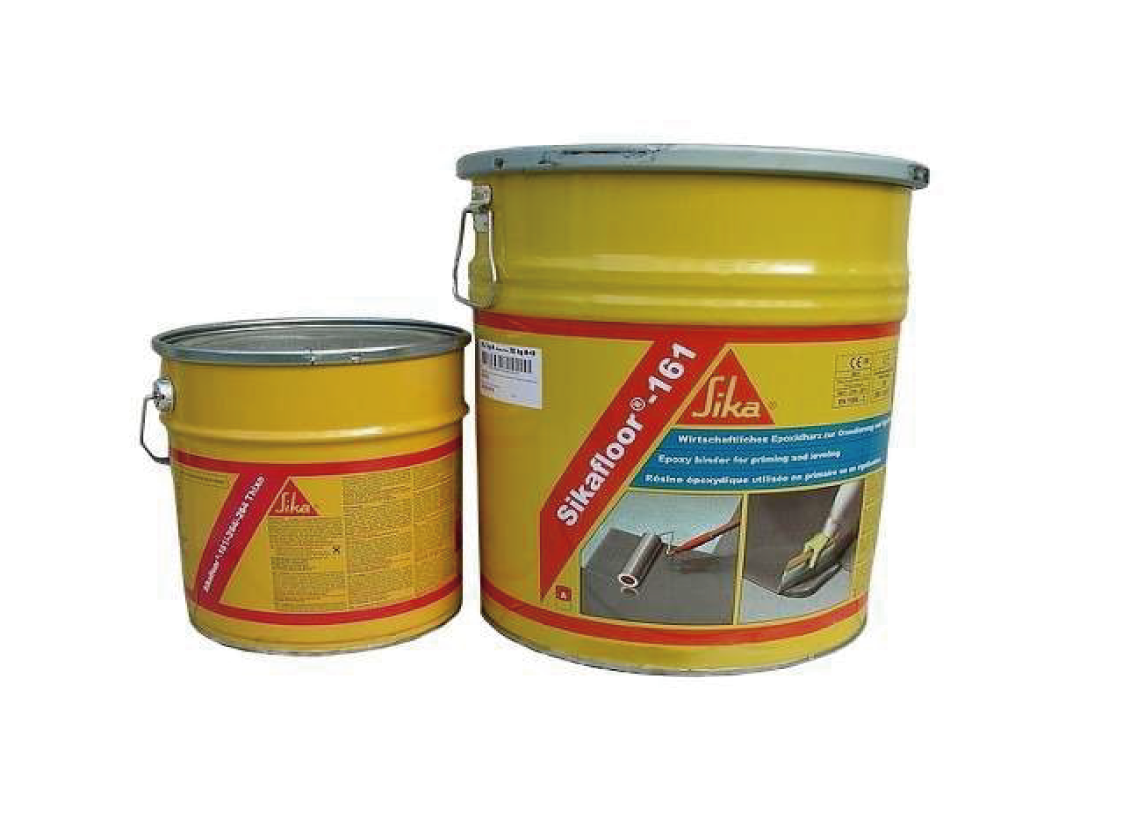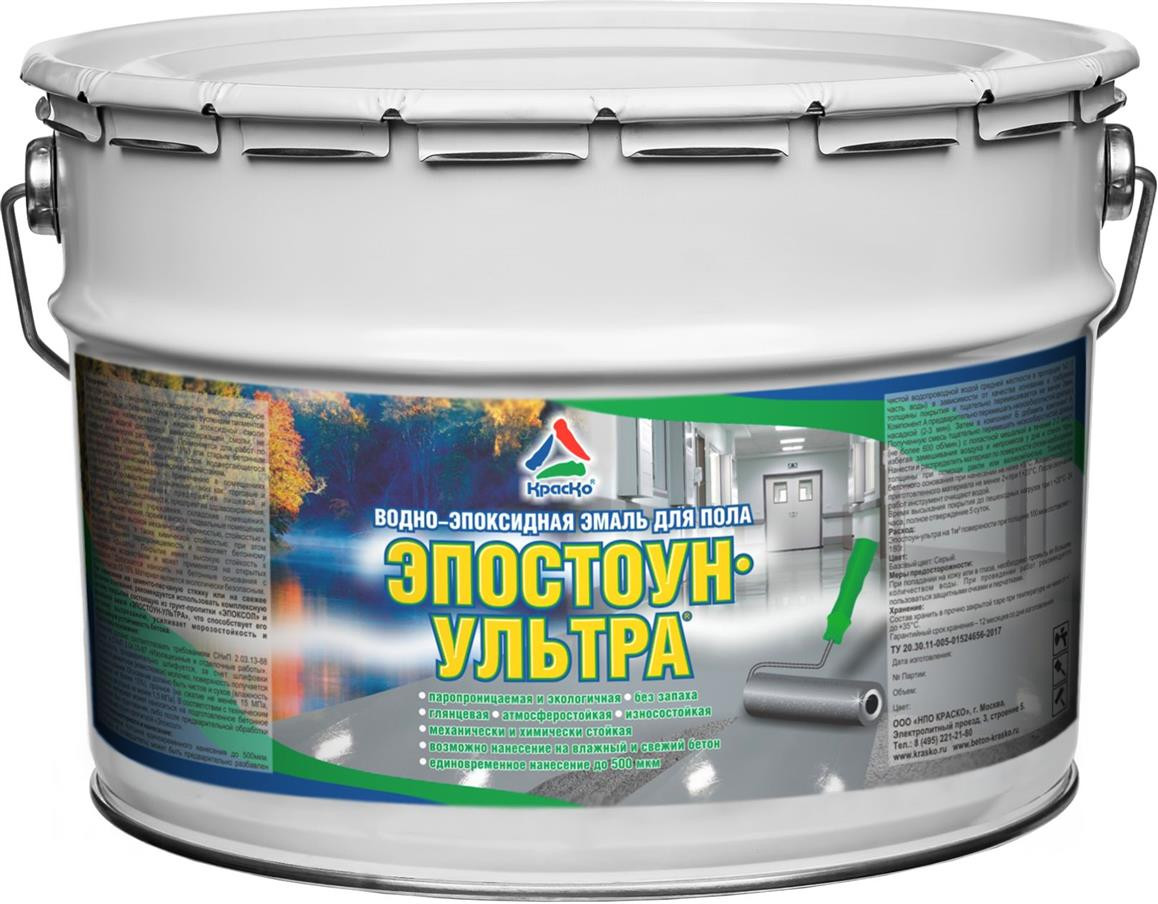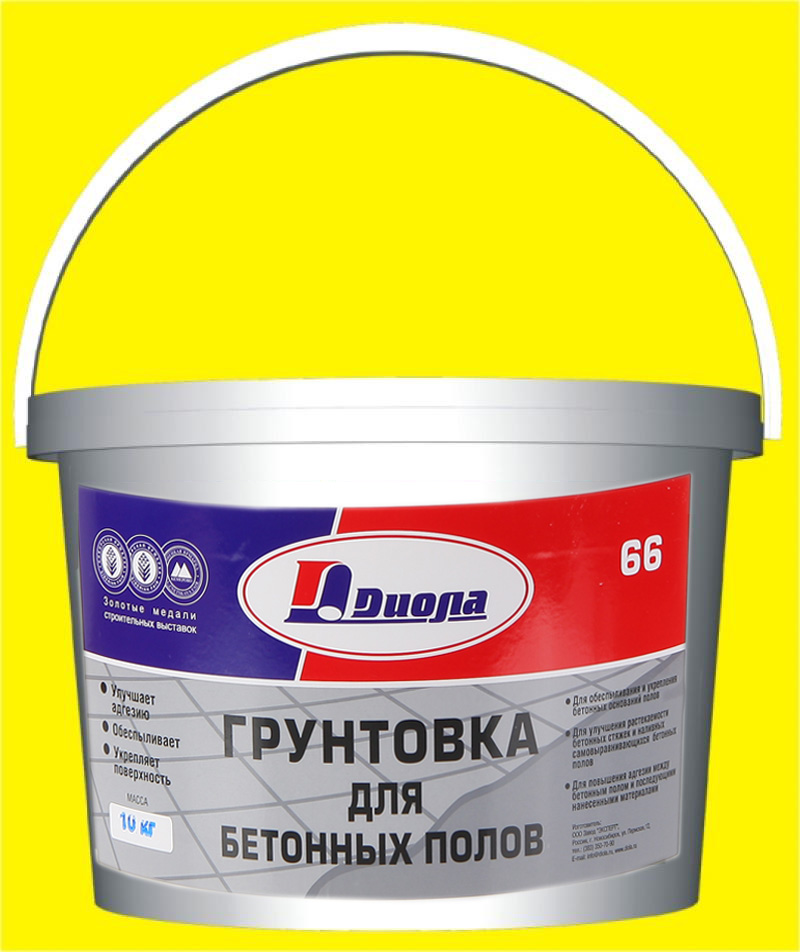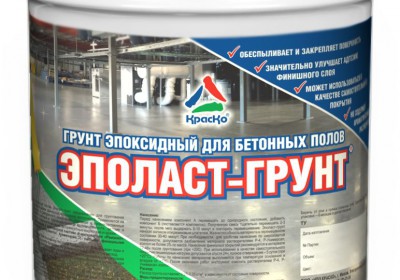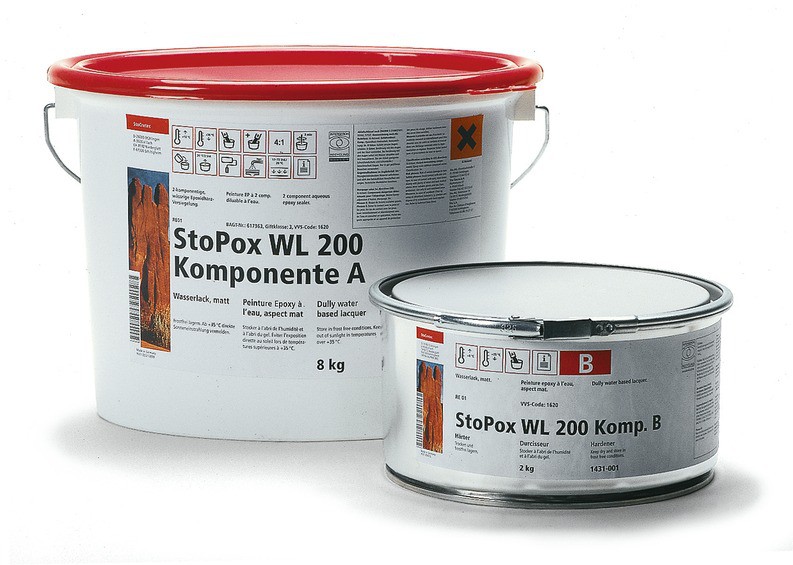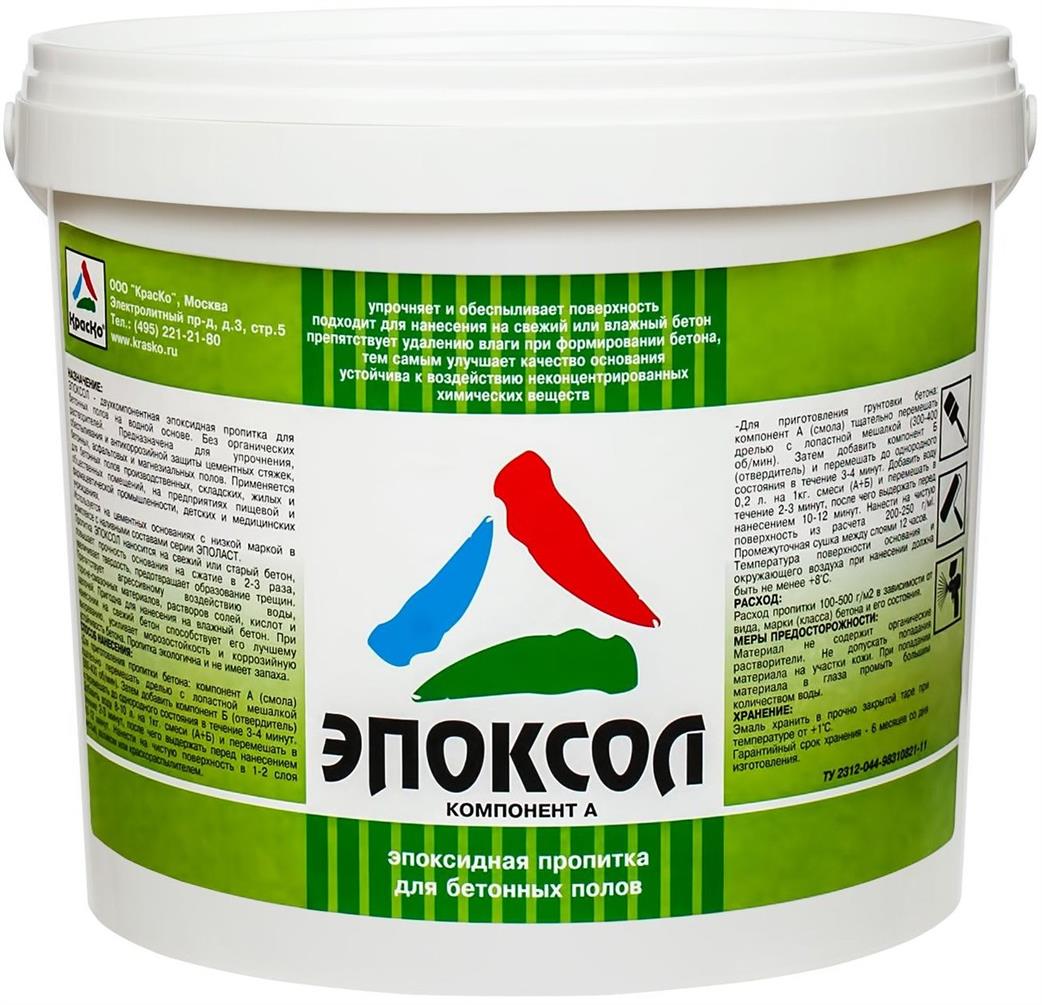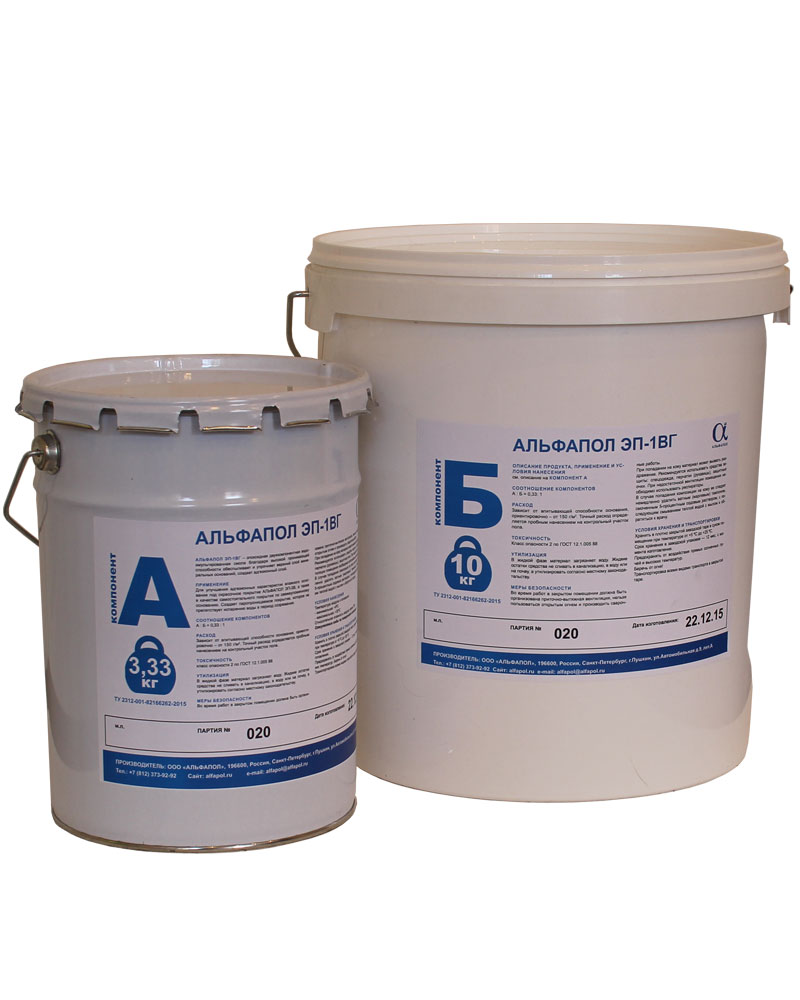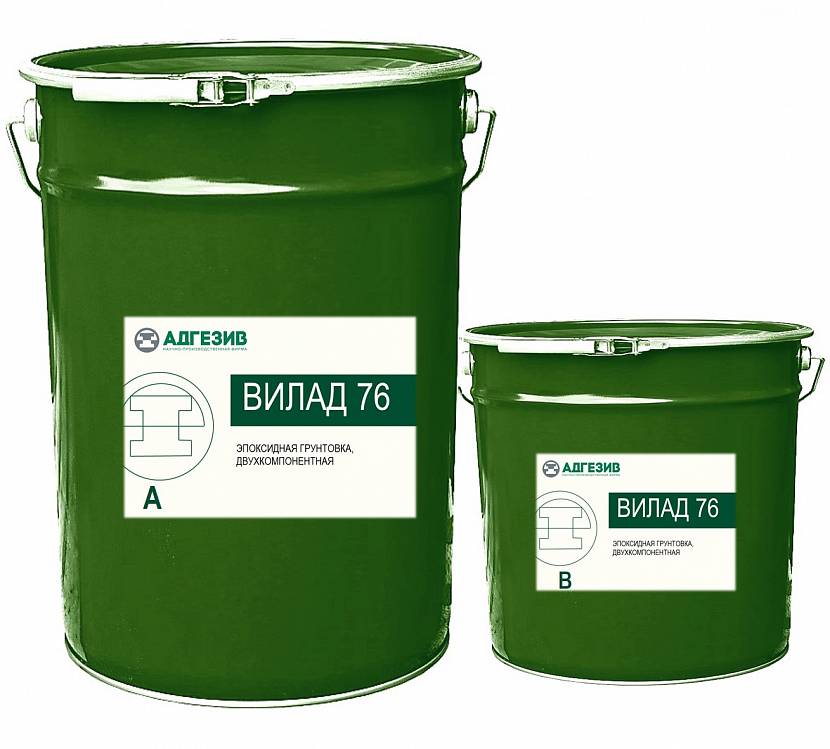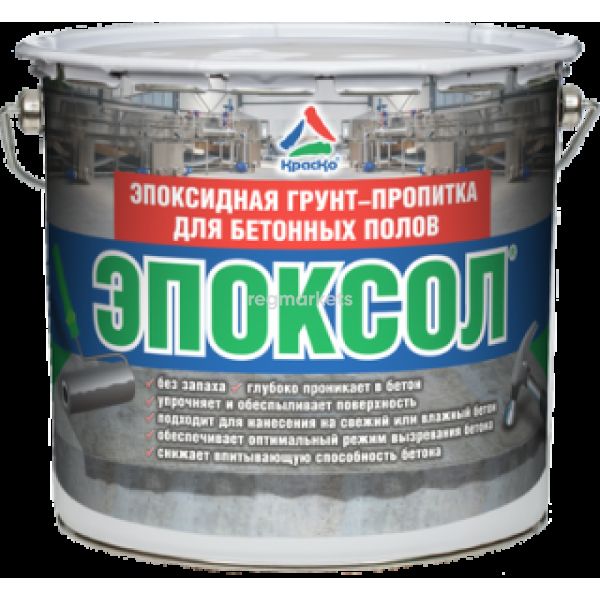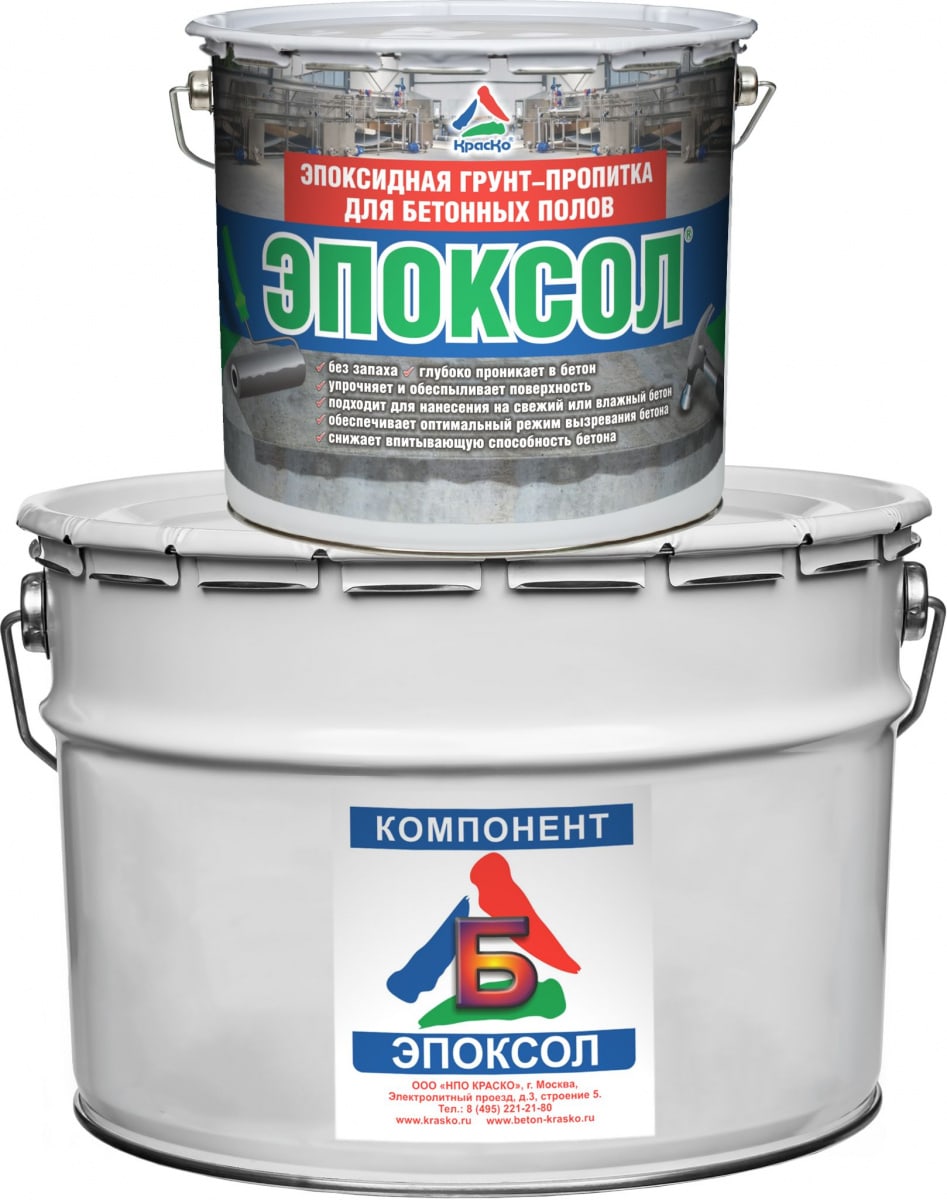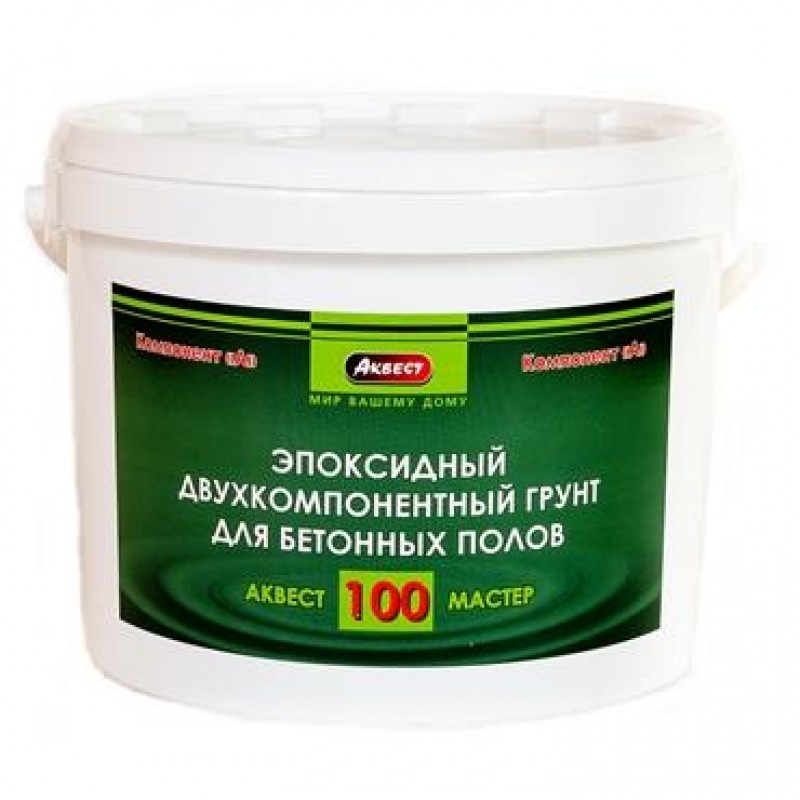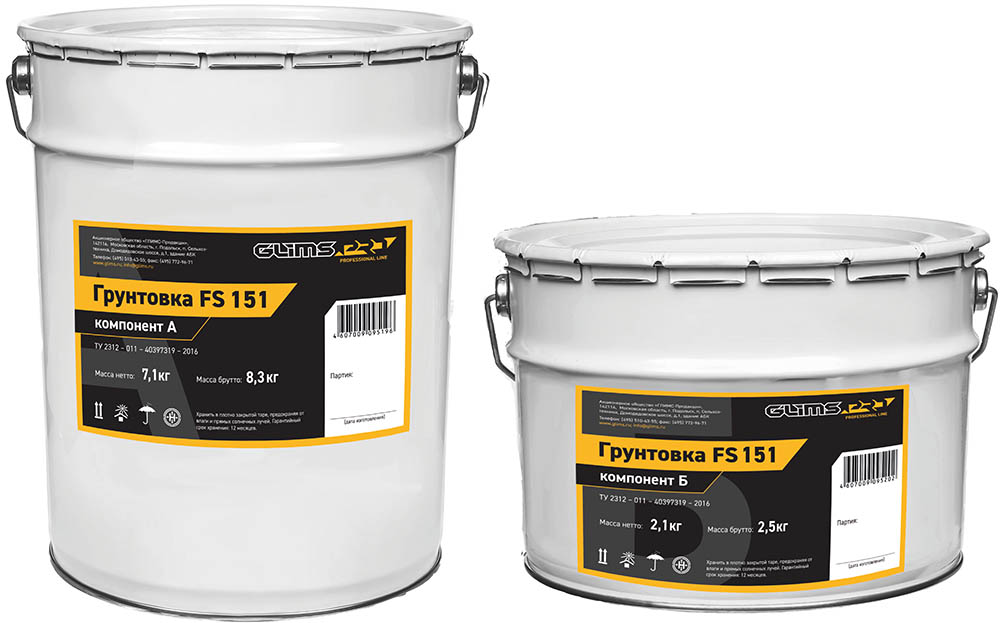Primer for metal POLYMERZINK-2K
Primer for metal POLYMERZINK-2K
| 465 RUB / kg |
POLYMERZINK-2K is an epoxy two-component zinc-filled primer for ferrous metal. Cold galvanizing of metal with epoxy primer will provide reliable protection of the structure outdoors in conditions of high humidity, in salt and sea water. The epoxy resin contained in the tread primer provides enhanced corrosion protection and water resistance to the coating.
A primer-protector is used, among other things, on a rusty surface (up to 100 microns) as a primer and as an independent coating.
Coating characteristics:
- Cathodic protection enhanced by exposure to water
- Electrical conductivity - no static electricity builds up
- Resistance to temperature extremes from -50 to +100 degrees
- Neutralization of local and underfilm corrosion
- Resistant to oils, petroleum products, salt
- Water resistance
Perfectly combined with polyurethane, epoxy, PVC topcoats, forming an extra strong, durable protective coating (up to 25 years).
Epoxy primer-protector is designed for structures exposed to aggressive weather conditions and various chemicals.
Areas of application for zinc epoxy primer:
- Rail and sea transport
- Bridges and hydraulic structures
- Piles and reinforcement of buildings
- Berths and ports
- Tanks and cisterns
- Pipelines, gas pipelines, oil pipelines
- Power lines, lighting poles
Mode of application:
Clean the surface of dust, dirt, oils, dry. Remove loose rust mechanically. Stir the epoxy primer base until smooth before use. Then add the hardener to the base, mix thoroughly and let stand for 30 minutes, then mix again. In the process of painting, periodically stir the primer-protector to prevent the deposition of zinc dust.
Ready-to-use epoxy primer is applied to the surface with a brush, roller or spray gun in 1-2 coats.
- Application temperature: from +5 to +30 degrees, humidity: no more than 80%
- Drying time between layers at a temperature of +20 degrees: 1.5-2 hours
- Viability of the composition at a temperature of +20 degrees: 12 hours
- Consumption: 0.2-0.3 kg / m2 in one layer
- Solvent: R-4
- Shelf life: 9 months
- Set weight: 16 kg
- Basic color: gray
Store epoxy zinc-filled primer in a tightly closed container, at a temperature not lower than -30 degrees, protecting it from heat and direct sunlight. Do not heat.
The KRASBYT company informs its customers that all materials produced by KRASBYT are intended only for professional work, which should be performed by the customer's profile specialists who have successful accumulated experience in working with similar materials.
Specifications:
| Composition | highly dispersed zinc in a solution of epoxy, polymer resins |
| Film appearance | matte coating |
| Mass fraction of non-volatile substances,% | 87-89 |
| Drying time of the coating to degree 3 at a temperature of +20 gr. and humidity 65%, h, no more | 1 |
| Film strength on impact, cm, not less | 50 |
| Bending strength of the film, mm, no more | 1 |
| Recommended thickness of one layer, microns | 65-70 |
Epoxy primer for metal
Epoxy primer is a time-tested primer for metal based on high-quality resins and active additives (zinc powder and others), which provide the coating with special protective properties.
The proven "epoxy" forms a strong anti-corrosion weather-resistant coating due to its increased resistance to temperature extremes, as well as to aggressive substances such as detergents, mineral oils, petroleum products. Enriched with zinc, the epoxy primer provides both cathodic and film protection to the metal.
The nuances of using aerosol products
Conventional two-component primers are usually over-prepared.Then you have to think about what to do with the remaining composition. After a while, such material hardens anyway, so it will no longer be possible to reuse it. There are no such problems with aerosol primers. While they can be quite expensive, you can still save money by not wasting a lot of material.
However, it should be borne in mind that aerosol primers cannot be stored for very long (unlike two-component versions). It is not recommended to remove such compounds in the basement or garage and forget about them for several years. The term of their use is limited. Do not forget that they are designed for small areas.

Since the surface must be prepared before using primers, the ease of use of an aerosol primer does not mean that, for example, scratches on a car can be treated right on the street, immediately after a defect occurs. This usually results in the surface having to be primed again.
This coating will be removed when you go to the workshop, but it will protect the surface from hidden salt corrosion.

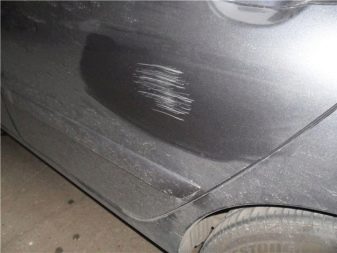
Varieties of primers for concrete
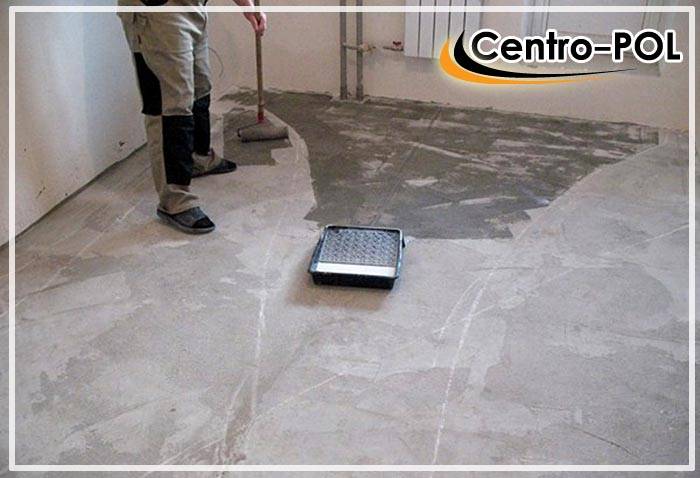
- Acrylic or emulsion mixtures are diluted with water and are highly penetrating, suitable for treating any surface - wood, drywall, cement screed and others. The acrylic mixture can be primed on porous and loose materials such as bricks or aerated concrete blocks. The composition penetrates deeply into the micropores of the material and increases the adhesion properties of the surface, that is, it provides better adhesion to the adhesive base when installing tiles and roll materials.
Acrylic mixtures dry out in a few hours, have practically no odor when applied and subsequently do not emit fumes harmful to the body. Fungicidal additives prevent mold and mildew under the coating
- Polyurethane mixtures are used to prepare the concrete base for painting, they do not react with aggressive chemicals. The polyurethane mixture dries within 12 hours, after which the polyurethane concrete paint can be applied.
- Epoxy compounds are also resistant to fuels, lubricants and detergents and are used before epoxy paint is applied. The epoxy primer hardens quickly, so it is advisable to use the prepared portion of the mixture within half an hour.
Two-component epoxy concrete primer
In most cases, this composition is used if you are going to install a self-leveling floor system. But not only in this case it makes sense to use a two-component epoxy primer - if the surface has high wear, it (the primer) should be added to the solution so that the surface strength increases significantly.
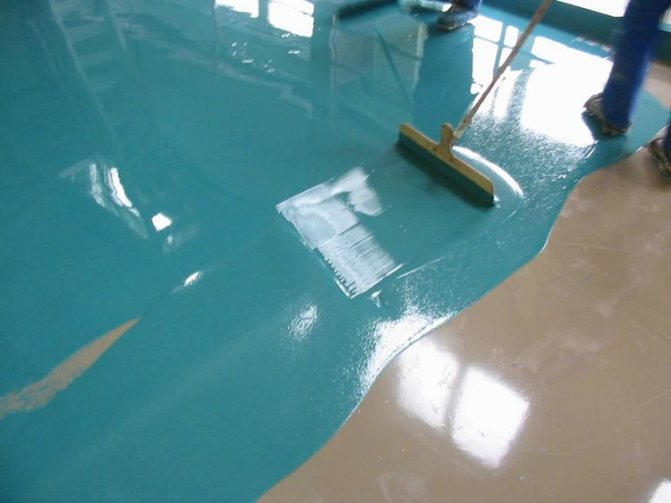
Features of the two-component primer:
- High wear resistance of the coating, which guarantees long-term preservation of good performance;
- High penetration ability, which also has the best effect on strength, because such a finish literally never has cracks and does not exfoliate;
- This composition dries up in a day, and complete polymerization will occur in about seven days - the coating is then ready for stress;
- In no case should such a composition be applied to wet surfaces, this will make the adhesion of the solution to the finish extremely low.
The mortar can be applied to the floor in a variety of ways, for example, with a rubber squeegee, trowel, mop, float. Usually, on the packaging with a primer, both the preferred tool for work and the approximate consumption of the composition are indicated.
Specifications
It was already mentioned above that epoxy primers are valued in the construction market due to their unique properties.The technical characteristics of compositions based on epoxy resins are as follows:
Excellent adhesion, allowing to prepare different types of substrates for subsequent finishing: concrete, brick, metal, wood, ceramics;
High moisture protection;
The epoxy primer dries out about 24 hours after application, but it is important to know that it is highly undesirable to use it on wet surfaces, otherwise there is a risk of deterioration in the adhesion properties of the mixture.
You should know that only high-quality epoxy primers will have the specified technical characteristics, and therefore it is important to know how to choose the right material. To perform a significant amount of work, it is best to purchase primes
The soil in this form will be cheaper. But if the work is to be done small - it will be more convenient to use the aerosol form of the primer release.
Recommended for reading:
When choosing an epoxy primer for a concrete base, you should always carefully study the composition of the mortar, see the shelf life and visually assess the type of soil.
Varieties of zinc primers
The zinc primer must be selected based on the type of surface and operating conditions. Zinc primer is applied to ferrous or non-ferrous metals. There are different types of phosphating, passivating, isolating, inhibiting and protective mixtures.
The phosphating type of primer is two-component, in the manufacture of which phosphoric acid is used with a diluent. With the help of such a mixture, the grip quality is improved.
An insulating zinc primer is available as alkyd or epoxy and protects the surface from moisture and oxygen. These primers are used to protect ferrous metals.
Passivating zinc primer for metal surfaces slows down the corrosion process.
The inhibiting mixture promotes the formation of a new type of substance on the surface, similar in type to an enamel-primer, combining the properties of both compositions.
The next type, a tread primer is used for treating rusty surfaces, has a magnesium alloy with zinc, as well as lead powder. Due to the content of zinc particles, after being applied to the metal surface, the coating invisible to the ordinary eye protects metal bases from scratches.
Alkyd paint for metal can be used as an independent coating. No paint or enamel is required over such a primer. It provides excellent anti-corrosion properties and also stops the rusting process.
This shows that the alkyd primer is capable of providing reliable protection against various atmospheric conditions, UV exposure.
Soil in aerosol cans
If you need to treat small areas or need to apply a primer to hard-to-reach areas, you can use an insulating primer in aerosol cans. This option is easy to use as the zinc primer is evenly applied and dries quickly.
The aerosol is always a one-component composition, it is completely ready to use, no additional manipulations are required. It helps with quick local repairs of coatings. This is the convenience of sprays.
It is suitable for the following types of surfaces:
- ferrous metals;
- chrome steel;
- galvanized steel;
- light alloys;
Aerosol soils are convenient, practical, profitable, and available for use.
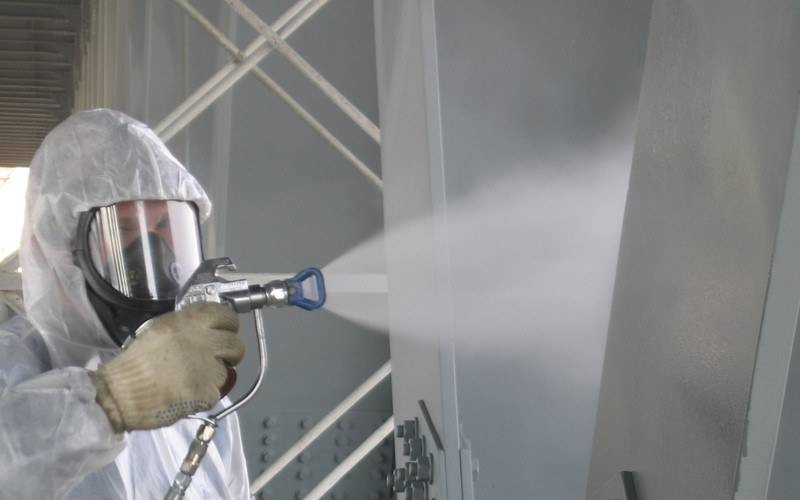
Two-component zinc primers
A two-component zinc-rich primer consisting of a zinc-rich epoxy base and a solvent, used for finishing with epoxy and polyurethane paints for protection of the metal coating from corrosion. The set includes two separate containers with a base and a diluent. The base consists of a mixture of polymer resins and zinc filler.The diluent contains isopropyl alcohol with phosphoric acid and auxiliary substances.
Due to its high zinc content, this primer is used to protect steel surfaces from corrosion.
A two component epoxy primer with a high level of moisture resistance. After the composition dries, it forms a dense water-repellent film on the surface, which protects against the appearance of corrosive formations with prolonged exposure to moisture on the metal.
In addition, with high strength and high durability, resistance to household chemicals, alkalis and acids, as well as to atmospheric influences, it does not lend itself to sudden changes in temperature, exposure to sunlight.
Two-component primers have excellent adhesion to the surface.
But two-component mixtures dry slowly, the drying time lasts up to 12 hours.
Zincconol
Zincconol is a product with a high zinc content (at least 94%), used for cold galvanizing of metal structures. They call it "liquid zinc". When interacting with air, it provides a durable, reliable coating and protective corrosion protection.
Zincconol is used both as an independent protector, and together with protective enamels, increases the strength of the anticorrosive protector in aggressive conditions. But even without additional protection "Zincconol" provides a guarantee of protection against corrosion of metal structures. After processing, the surfaces acquire resistance to oxidation with oxygen, resistance to acids, alkalis, oil products, sea and fresh water and to high temperatures.
Types of primers
The soil for concrete for the floor can be different - depending on what substances are used as a base, there may be different properties, operating conditions, application rules, consumption, drying time and other nuances. Before choosing a particular composition, it is necessary to carefully study its features.

Alkyd
Such soils are used to cover metal and wooden surfaces; the composition will not work for drywall and concrete. Apply the primer before painting the surface, wait 10-15 hours for complete drying. Applying a layer of such a primer gives the wood a certain looseness, thanks to which the material is reliably protected from mold, parasites, decay, and the subsequent layer (of concrete mortar, for example) adheres tightly to the wood.
Acrylic
Acrylic compounds are used very often as the safest and most versatile. The water-based mixture is perfectly diluted (usually with water) and has excellent penetrating properties. It dries quickly (after 3-4 hours it is already possible to work with the surface), does not emit harmful substances and toxins, significantly improves adhesion, protects against fungus and mold.
Such a primer is suitable for the treatment of any living quarters (even children's rooms, kitchens), with the exception of those where there is a high level of humidity.
Epoxy
An epoxy primer for concrete floors makes the surface much more durable, odorless and does not emit any harmful substances, qualitatively protects against any aggressive media, water, high humidity, fuels and lubricants. The composition significantly improves the adhesion of materials, is applied to a slightly damp floor. The only drawback of the mixture is that the layer must be applied quickly, since within 30 minutes the prepared mixture has already set.
Polystyrene
With this type of composition, it is best to prime plastered and wooden surfaces, since the soil is toxic, it should not be used in confined spaces (at least there should be a possibility of high-quality ventilation of the room). It is imperative to follow the safety rules during work. Typically, such compositions are used for the subsequent installation of a self-leveling floor.
Other types of soils
Different types of bases are primed with other compounds. Some of them are suitable for a certain material, others are relevant for use in certain situations, conditions.

Different types of primers:
- Mineral - may include cement, film-forming substances, glue, antiseptics, adsorbent and water-repellent components. Such a primer is suitable for a concrete base, dries quickly, is absolutely safe, but does not withstand interaction with aggressive substances poorly.
- Liquid glass - used to make concrete resistant to moisture and water. The composition is usually based on sand, soda, silicates. This primer is applied to the concrete floor and creates an ideal waterproof surface. It grabs quickly, but does not last long.
- Glyphthal Primers - Typically used for metal finishing, making the substrate more durable. Relevant exclusively for interior work, dry out within a day.
- Perchlorovinyl compounds - suitable for brick, plastered surfaces (outdoor work). Can be processed outdoors. The primer dries quickly - within one hour.
- Polyvinyl acetate - used when it is planned to cover the base with polyvinyl acetate paint. They are suitable for all types of floors, dry for 15 minutes, reduce the consumption of paints and varnishes in subsequent processing.

Colored primers
 It is allowed to use colored impregnations in the construction of residential and industrial premises
It is allowed to use colored impregnations in the construction of residential and industrial premises
Colored concrete primers will not only harden the surface, but also create an interesting bright finish in the garage that will not wear off for a long time. Tinting polyurethane impregnations form a thin-layer durable film that adheres perfectly to porous surfaces such as concrete-cement screed, concrete tiles, bricks, slate and the like. After the treatment with tinting impregnation, the surface of the concrete base becomes homogeneous, glossy or semi-matt. It is allowed to use colored impregnations in the construction of residential and industrial premises, medical and public institutions, food industry enterprises.
A great option for those who want to save time and money are primer paints for concrete, which combine the properties of reinforcing primers and decorative coatings. Concrete treated in this way has not only a more wear-resistant surface, but also acquires an antistatic, anti-slip effect, is easily cleaned of dirt and gives the room a non-monotonous character. Acrylic paints for concrete almost do not wear off over time and create a flat, smooth surface, when dry, a glossy, semi-matte or matte effect is obtained, they dry quickly in two days. Acrylic-silicone paints are diluted 30% with water and applied in two layers with an interval of three hours.
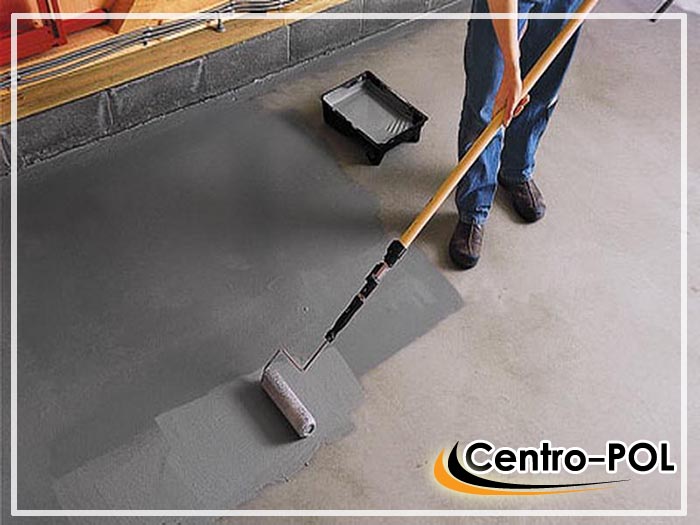 Polyurethane paints will enhance the effect of a polyurethane primer on concrete
Polyurethane paints will enhance the effect of a polyurethane primer on concrete
Polyurethane paints will enhance the effect of the polyurethane primer on concrete and are suitable for floor use two days after application, after two weeks complete drying occurs and resistance to chemical reagents appears.
Epoxy paints can be applied without prior priming to a clean, dust-free concrete surface. The advantage of epoxy paint is that it is not necessary to wait for the concrete to dry completely, since it does not delay moisture evaporation. If the surface is heterogeneous, with small defects, you can pre-apply a primer layer, diluting the paint 20% with water. Stir epoxy two-component paint just before use, remembering that it is practically very difficult to remove it.
Video "Applying an epoxy primer".
Application recommendations
The process of applying epoxy mortar to the base will consist of the following steps:
- Preliminary preparation of the base, which must be thoroughly cleaned of dirt, dust, old coatings. The base must be cleaned of any oily and greasy stains, traces of substances of a different nature of origin. If necessary, the base can be washed, however, in this case, it will have to dry completely before priming.
- The technology for preparing the epoxy primer for work will depend on what specific type of material was purchased. One-component mixtures are simply thoroughly mixed; for two-component soil, a different preparation procedure is provided. Open the container with the resin component and mix it with the hardener. The proportions of the solution are given by the manufacturer in the instructions for use, and you cannot reduce or increase them at your own discretion! Such self-activity is fraught with the loss of useful properties by the soil.
- The components of the solution are mixed with a mechanical stirrer until a homogeneous mass is obtained, which must be used immediately.
- Epoxy primer can be applied with a variety of tools, instructions on which type of tool is best to use in work can be found in the instructions for a particular type of solution. Most often, manufacturers advise to distribute the primer over the surface with rollers, spatulas, floats, spray gun.
- The material is poured over the base in a thin layer and carefully distributed with the tool recommended by the manufacturer.
- Two-component solutions set quickly enough, therefore, after preparation, the primer must be applied to the base as quickly as possible - in about 20 minutes. Therefore, it is not recommended to prepare the solution in large quantities.
- High temperatures can adversely affect the beneficial properties of the soil-mixture, therefore, in hot weather, the solution is always prepared in a small amount required to perform a specific stage of work (portions no more than 3 kilograms).
The soil will harden for about a day. On the admissibility of walking on the created coating, you should clarify the information in the instructions for use for a specific brand of primer.
The need for re-priming with epoxy primer is determined visually. If the solution has completely absorbed (this is possible with increased porosity of the base), without forming a noticeable and shiny film, or bubbles and holes appeared on the coating surface, it is required to apply the solution in at least one more layer.
When working with a solution, certain work rules must be observed. It is better to protect skin and eyes with special clothing, gloves and glasses
If areas in an enclosed space are treated with epoxy primer, it is important to provide good ventilation in the room.
Epoxy primers for concrete - a material, the use of which helps to properly prepare surfaces for the production of further finishing work. The finished base turns out to be reliable, heavy-duty, resistant to wear and tear and the action of negative environmental factors. Therefore, epoxy primers remain in demand in the construction market, despite the rather high price of the material.
Types of epoxy concrete primer
On the modern market, there are several types of epoxy primers for concrete:
- standard, which is considered ideal for self-leveling floors, can be used to create polyurethane coatings;
- winter - for self-leveling floors, used at a base temperature of up to 0 ° C;
- fast primer, which is used for express finishing of concrete substrates;
- anti-corrosion primer.
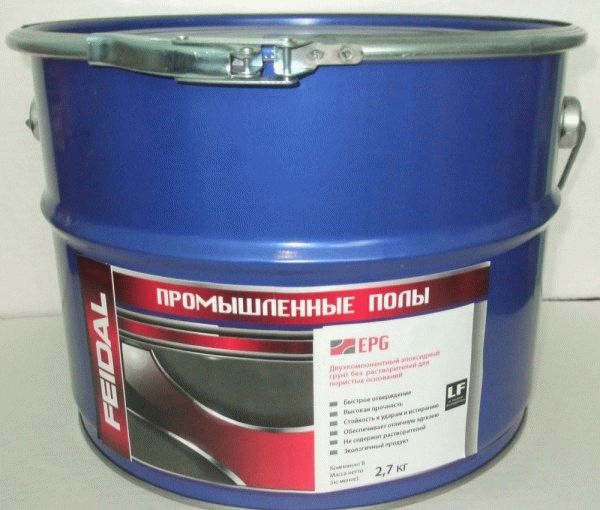 Two-component epoxy primer for concrete floors
Two-component epoxy primer for concrete floors
Concrete impregnation
The concrete floor can deform over time.Therefore, in addition to the epoxy primer, it is recommended to use an impregnation that has the following properties:
- makes it possible to remove a layer of dust from the surface of the coating;
- densifies the chemical composition and density of the primer;
- enhances moisture resistance.
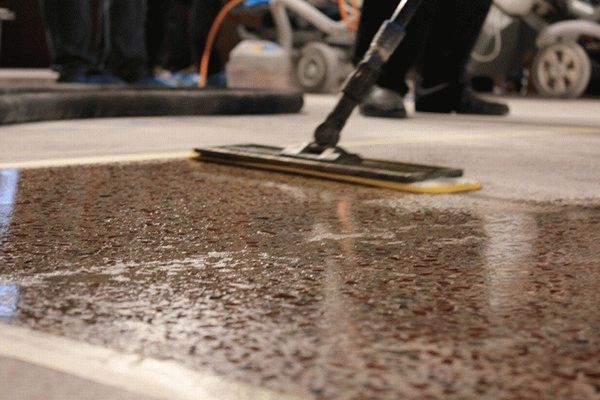 Before applying the primer, the concrete floor must be treated with impregnation
Before applying the primer, the concrete floor must be treated with impregnation
Thus, the primer, which contains epoxy components, is one of the most popular and effective finishing materials. A huge number of advantages, including high quality and affordable price, ensure the demand for the product.
Material characteristic
Like any construction material, the analyzed compositions have individual characteristics. Due to the useful set of properties, primers are used for:
- strengthening the surface and preventing the formation of cracks;
- increasing the adhesive properties of decorative materials;
- savings in consumption due to less absorption of the treated base;
- increasing wear resistance;
- providing protection against the harmful effects of moisture penetrating through the pores;
- preventing the development of fungal formations and mold.
Benefits of Application
The relevance of the application is due to the presence of pores in concrete, through which moisture, dust and other more aggressive substances penetrate into the upper layer of this raw material. These components, in turn, over time, contribute to the violation of integrity, decrease in wear resistance and the appearance of cracks.
Surface priming is performed regardless of the type of object. The treatment of concrete ceilings, floors and walls with such substances, along with an increase in adhesion, is able to protect the base from the harmful effects of moisture, the formation of fungi and mold.
Primers also allow subsequently not only to reduce the volume of paint or glue, but also eliminate the possibility of premature peeling of decorative or protective materials.

